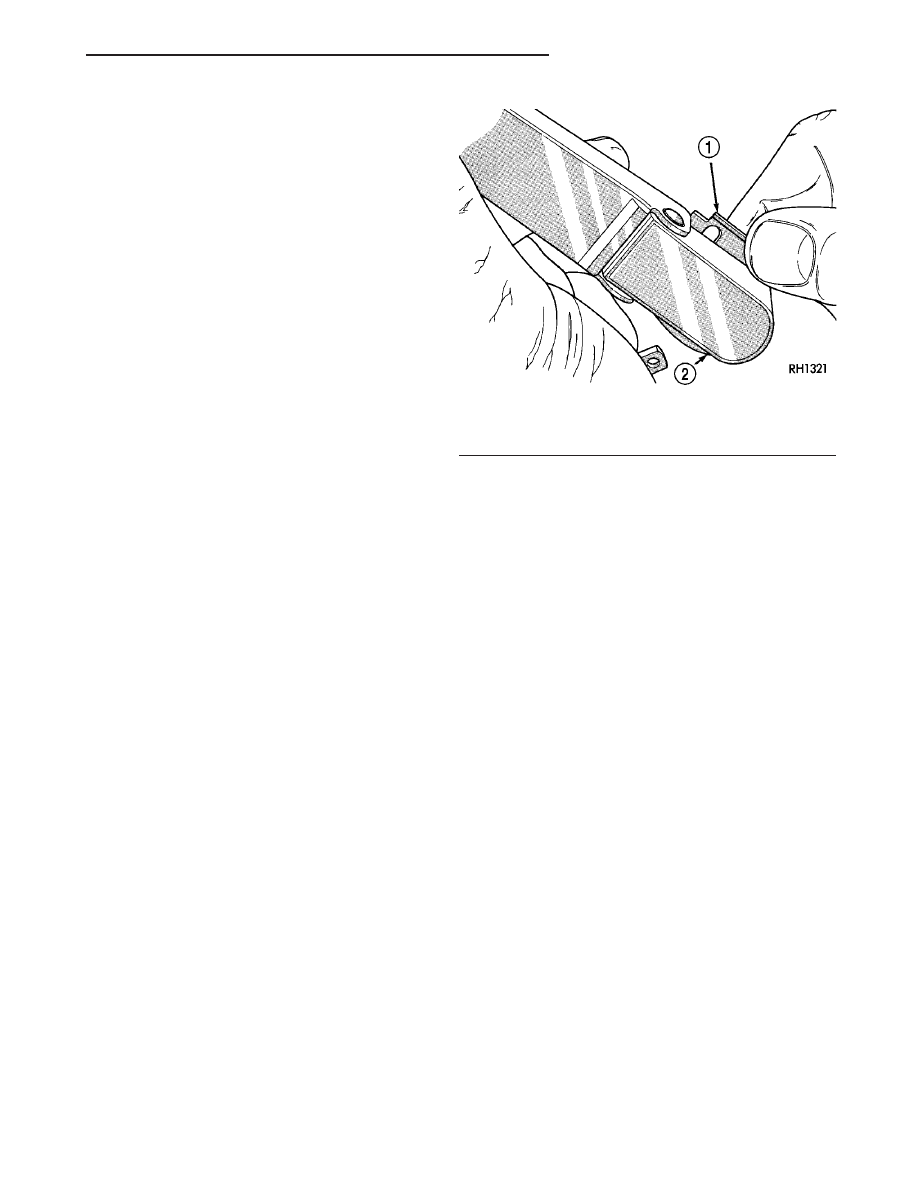Jeep Wrangler TJ. Manual - part 335

(4) Using a trim stick or another suitable wide
flat-bladed tool, gently pry the barbed inlet nipple of
the front washer pump/motor out of the rubber grom-
met seal in the washer reservoir. Care must be taken
not to damage the washer reservoir.
(5) Remove the front washer pump/motor from the
washer reservoir.
(6) Remove the rubber grommet seal from the
front washer pump/motor mounting hole in the
washer reservoir and discard.
INSTALLATION
(1) Install a new rubber grommet seal into the
front washer pump/motor mounting hole of the
washer reservoir.
(2) Position the front washer pump/motor inlet
nipple to the mounting hole in the washer reservoir
(Fig. 11).
(3) Using hand pressure, firmly and evenly press
on the front washer pump/motor to engage the inlet
nipple through the rubber grommet seal and into the
washer reservoir. Care must be taken not to damage
the washer reservoir.
(4) Reconnect the headlamp and dash wire harness
connector for the front washer pump/motor to the
washer pump/motor connector receptacle.
(5) Reconnect the front washer supply hose to the
barbed outlet nipple of the front washer pump/motor.
(6) Refill the washer reservoir with the washer
fluid drained from the reservoir during the removal
procedure.
(7) Reconnect the battery negative cable.
FRONT WIPER ARM
DESCRIPTION
The front wiper arms are the rigid members
located between the wiper pivots that protrude from
the cowl plenum cover/grille panel near the base of
the windshield and the wiper blades on the wind-
shield glass. The wiper arm has a die cast metal
pivot end (Fig. 12). On the underside of this pivot
end is a large internally serrated socket formation
with a small, movable, stamped steel latch plate that
is secured loosely under a small strap that is staked
to the pivot end.
The wide end of a tapered, stamped steel channel
hinges on and is secured with a hinge pin to the
pivot end of the wiper arm. One end of a long, rigid,
stamped steel strap, with a small hole near its pivot
end, is riveted and crimped within the narrow end of
the stamped steel channel. The tip of the wiper blade
end of this strap is bent back under itself to form a
small hook. Concealed within the stamped steel
channel, one end of a long spring is hooked through a
hole in a small stamped steel strap on the hinge pin
within the die cast pivot end, while the other end of
the spring is hooked through the small hole in the
steel strap. The entire wiper arm has a satin black
finish applied to all of its visible surfaces.
A wiper arm cannot be adjusted or repaired. If
damaged or faulty, the entire wiper arm unit must be
replaced.
OPERATION
The front wiper arms are designed to mechanically
transmit the motion from the wiper pivots to the
wiper blades. The wiper arm must be properly
indexed to the wiper pivot in order to maintain the
proper wiper blade travel on the glass. The serrated
socket formation in the wiper arm pivot end inter-
locks with the serrations on the outer circumference
of the wiper pivot driver, providing positive engage-
ment and finite adjustment of this connection. The
latch plate on the underside of the wiper arm pivot
end locks the wiper arm to the wiper pivot driver
when in its installed position; and, when in its
unlocked position, also serves as a blocker to hold the
spring-loaded wiper arm off of the glass to facilitate
removal and installation. The spring-loaded wiper
arm hinge controls the down-force applied through
the tip of the wiper arm to the wiper blade on the
glass. The hook formation on the tip of the wiper arm
provides a cradle for securing and latching the wiper
blade pivot block to the wiper arm.
REMOVAL
(1) Lift the front wiper arm far enough to raise the
wiper blade off of the glass and permit the wiper arm
latch plate to be pulled out to its holding position,
then release the arm (Fig. 13). The wiper arm and
Fig. 12 Wiper Arm
1 - LATCH
2 - WIPER ARM PIVOT END
TJ
FRONT WIPERS/WASHERS
8R - 13
FRONT WASHER PUMP MOTOR (Continued)